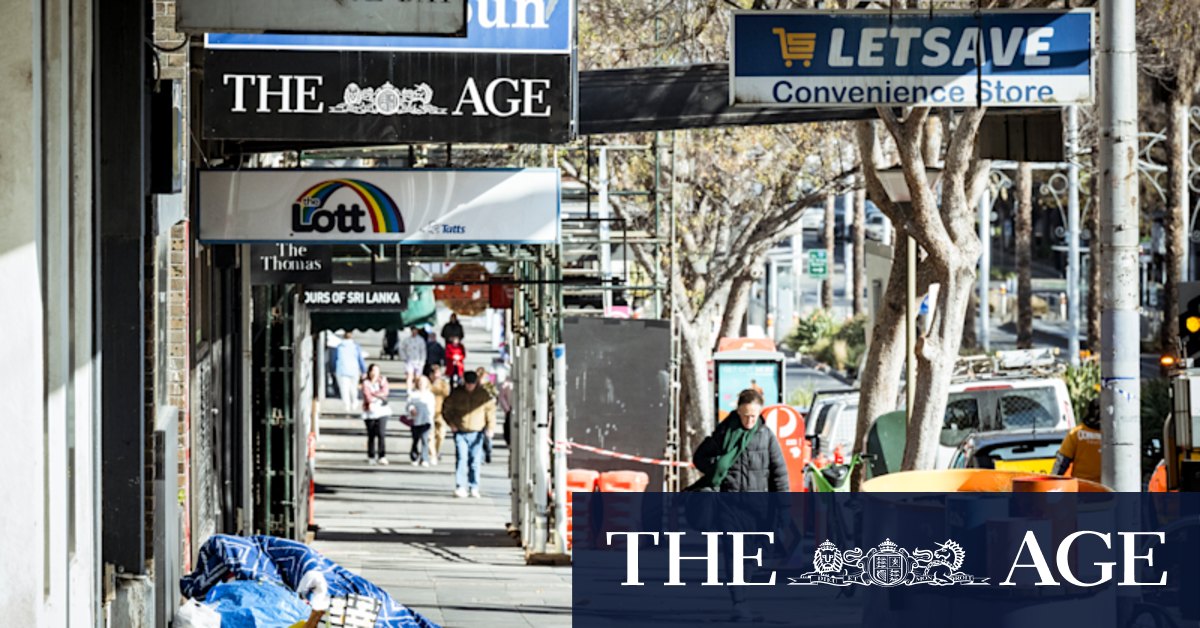St Kilda's Struggle: The Fading Allure of Melbourne's Bohemian Heart

Stroll through the streets of St Kilda today, and the signs of decline are unmistakable. Once a vibrant cultural hub, the area now presents a tableau of vacant shops, scattered sleeping bags, and the detritus of takeaway meals. The rise in homelessness, coupled with an oversupply of apartments that has driven property prices down, paints a picture of a suburb on a worrying descent. Yet, despite its challenges, St Kilda remains beloved by its residents, who cherish its gritty charm and unparalleled diversity.
Acland Street, once bustling with unique boutiques and eateries, now cycles through a series of frozen yoghurt cafes, bohemian fashion outlets, and transient pop-up stores. The once-premier Fitzroy Street, famed for its top-notch restaurants and vibrant nightlife, now stands as a mere shadow of its former self, its diminished allure reflected in the falling home values.
Originally a bastion of affluence, St Kilda is now a mosaic of quiet, tree-lined streets dotted with stately art deco homes, a few grand mansions—many subdivided into flats—and a plethora of mid-century apartment blocks of varying quality. In St Kilda West, adjacent to the affluent Albert Park, larger Victorian and Edwardian homes stand on expansive plots, interspersed with art deco gems. The area still boasts attractions like Catani Gardens and the St Kilda Foreshore Reserve, venues for public events that draw crowds.
However, as one moves eastward, the landscape shifts. The generous plots and leafy avenues give way to haphazard apartment complexes, neglected public housing, and abandoned properties. This stark contrast is reflected in the stagnant apartment values. While unit prices have generally risen across Melbourne, St Kilda's have languished, with a decade-long downward trend. Buyers’ advocates caution against investing in the area, advising clients to avoid large, generic apartment buildings, which are in oversupply.
Karen Avallone, a local buyers’ advocate and St Kilda resident since the late 1960s, emphasizes that the suburb's unit market has remained flat, diverging from broader Melbourne trends. "We tell our clients not to buy apartments in St Kilda unless it’s a small, older block," she advises.
Data from property analytics firm Cotality corroborates this, showing a 5.9% decline in St Kilda unit values over the past five years, with St Kilda West and East experiencing similar downturns. In contrast, Greater Melbourne saw a 2.4% increase. The December quarter revealed that nearly a quarter of homes sold in the Port Phillip area fetched less than their original purchase price.
Tim Lawless, Cotality’s research director, attributes these "relatively soft conditions" to a pandemic-driven shift in buyer preferences towards larger homes. "During this time, house values outperformed unit values as buyers sought more space," he explains.
The oversupply of units, coupled with elevated listing levels since 2020, has further depressed values. "Higher stock levels have likely weighed on values," Lawless notes, "giving buyers more choice and leverage in negotiations."
Jim Malamatinas, director at A Game Property Advisory, echoes these sentiments. "About 79% of the dwellings here are apartments," he points out. "There’s just not enough scarcity to drive price growth."
Yet for many locals, St Kilda's appeal transcends financial considerations. James Norman, a 54-year-old writer, purchased his art deco flat on Barkly Street 15 years ago. While its value has appreciated modestly, Norman is unfazed, drawn instead by the suburb's authentic diversity.
Fashion designer Neisha, who benefits from reduced rent on Fitzroy Street as part of revitalization efforts, acknowledges a "sadder" post-COVID vibe but remains enamored with the area's eclectic mix. "It’s one of the last areas where you see a hodgepodge of everybody," she observes.
However, the rise in homelessness remains a pressing issue. The City of Port Phillip's controversial proposal to fine homeless individuals is currently under consideration, with council discussions ongoing and community engagement planned, rather than having been ultimately abandoned. The withdrawal of government-provided emergency accommodation post-lockdowns has exacerbated the situation, with many now seeking refuge in unused doorways.
Local advocate Aife Raveche notes a perceptible shift in safety since COVID, as the area grapples with unresolved issues, including a persistent drug trade. "It’s really sad because those people need help," Avallone laments, underscoring the urgent need for comprehensive solutions.
Despite its challenges, St Kilda's enduring spirit and vibrant community continue to captivate those who call it home, even as it navigates the complexities of change.
🔮 Fortellr Predicts
Confidence: 85%
The future of St Kilda appears to be at a critical juncture, driven by several competing forces with potential to reshape its socio-economic landscape. First, the area's property market is poised for a significant recovery starting in 2025, fueled by revitalization projects and shifting investor attitudes. This resurgence may attract new residential and commercial interest, offsetting recent declines in property values. Secondly, the ongoing revitalization and gentrification initiatives, such as luxury developments and strategic urban renewal plans, are likely to enhance the suburb's attractiveness to higher-income demographics, although they could also exacerbate socioeconomic divides and alter the cultural fabric that St Kilda is known for. A notable consequence of these improvements might be the further displacement of lower-income residents, presenting a challenge in maintaining the area's iconic bohemian spirit. Efforts to balance economic growth while preserving cultural diversity will be crucial. A potential risk is the increased rate of homelessness if interventions are not swiftly implemented. Local government will likely face increased pressure to provide both emergency accommodation and long-term affordable housing solutions, set against the backdrop of ongoing debates over policy measures dealing with homelessness. In response to these complex dynamics, stakeholders including property investors, local businesses, community leaders, and the government are anticipated to adopt more collaborative approaches, seeking to address safety concerns, manage demographic shifts, and preserve community identity. The suburb's trajectory will depend on the sustained commitment among these groups toward a cohesive strategy that fosters economic viability without compromising cultural authenticity.